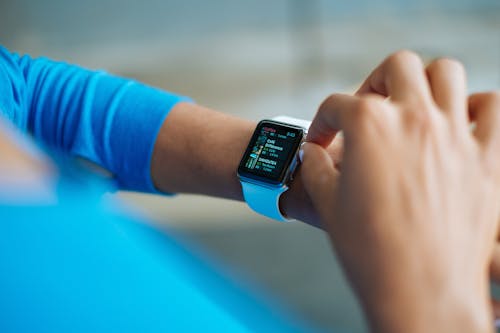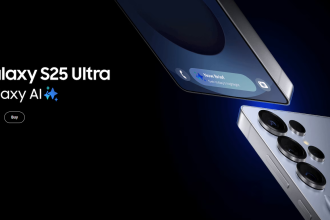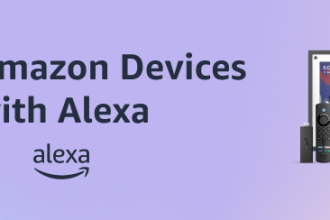The Evolution of Wearable Technology
Wearable technology has come a long way since its early iterations. Once limited to fitness trackers and simple devices like pedometers, today’s wearable tech has expanded far beyond these basic functions. From heart rate monitoring to sleep tracking, and from navigation aids to medical-grade sensors, the possibilities for wearables continue to grow rapidly. As of 2025, wearable technology has transformed from a niche category to a mainstream segment, with an increasing number of consumers and businesses adopting these devices for personal health, fitness, and convenience.
Early wearable devices primarily focused on fitness tracking. The rise of fitness bands like the Fitbit and the Nike FuelBand in the early 2010s marked the beginning of a significant shift toward wearable tech. These devices allowed users to track their daily activity levels, measure calories burned, and monitor their steps. While these gadgets were quite simple in comparison to the advanced wearables of today, they laid the groundwork for the development of more sophisticated technology.

Over the years, companies began adding more features to their wearables, expanding their functionality beyond basic fitness metrics. As the technology improved, wearables became more integrated with other smart devices and the Internet of Things (IoT), creating a seamless ecosystem for health and wellness monitoring.
The Rise of Smartwatches and Their Role in Health Monitoring
One of the most significant advancements in wearable tech has been the development of smartwatches. Companies like Apple, Samsung, and Garmin have been at the forefront of this movement, creating devices that combine fitness tracking with an array of health-monitoring features. Today’s smartwatches do much more than just tell the time – they monitor heart rate, track workouts, monitor sleep patterns, and even detect irregularities such as abnormal heart rhythms.
Apple’s introduction of the Apple Watch marked a pivotal moment in wearable technology, particularly with its health monitoring capabilities. The Apple Watch Series 4 introduced the ability to perform electrocardiograms (ECGs), allowing users to monitor their heart health directly from their wrist. This breakthrough made it possible for individuals to detect early signs of atrial fibrillation (AFib) – a condition that can lead to stroke – without the need for a traditional medical visit. Over time, Apple added even more health-related features, such as fall detection, blood oxygen monitoring, and even mental health tracking, making the Apple Watch a truly comprehensive health companion.
Samsung, with its Galaxy Watch line, and other competitors like Fitbit and Garmin, have also followed suit by incorporating heart rate sensors, GPS, sleep tracking, and even stress management tools into their smartwatches. These devices offer users a wealth of data that can help them improve their health and well-being, but they also provide real-time insights that can be shared with healthcare providers, making them an essential tool in preventive healthcare.
The Expanding Role of Wearables in Health Monitoring
While fitness tracking remains a significant driver of wearable tech growth, the focus is increasingly shifting toward health monitoring. The integration of advanced sensors and real-time data collection has opened up new possibilities for using wearables in the healthcare field.
One of the most notable developments in this area is the ability of wearables to continuously monitor vital signs, providing a more holistic view of a person’s health. Devices can now measure a variety of important metrics, such as heart rate, blood oxygen levels, skin temperature, and even blood glucose levels. These sensors are becoming increasingly accurate, allowing users to monitor their health in real-time, track trends over time, and make more informed decisions about their lifestyle and medical care.
For example, continuous glucose monitors (CGMs) are wearables that track blood sugar levels in real-time, providing critical data for individuals with diabetes. Traditionally, people with diabetes had to monitor their blood sugar levels through periodic finger-prick tests, but CGMs offer a non-invasive alternative that allows for continuous monitoring. This technology has improved the management of diabetes, offering users greater control over their condition and potentially reducing the risk of complications.
Another area where wearables are making an impact is in mental health monitoring. Wearables like the Oura Ring and the WHOOP Strap have incorporated sensors that track sleep quality, heart rate variability, and other indicators that are linked to mental health and stress levels. By analyzing patterns in sleep, activity, and other biometric data, these devices can help users identify stress triggers, track their emotional well-being, and make changes to their daily routines to improve mental health.

Wearables in Healthcare: A Tool for Early Detection and Prevention
One of the most exciting developments in wearable tech is its potential for early detection of health issues. Traditional healthcare often focuses on treating problems after they arise, but wearable tech is changing that approach by enabling continuous monitoring and providing a proactive means of identifying potential health issues before they become serious.
For instance, some smartwatches can detect irregular heart rhythms, alerting the wearer to the potential for conditions like arrhythmia or AFib. The Apple Watch, in particular, has led the way in this regard, with its ability to monitor heart health and send alerts if it detects any anomalies. This early warning system has the potential to save lives by prompting users to seek medical attention before a more severe event, such as a stroke, occurs.
Additionally, wearables that track skin temperature, heart rate, and other physiological signs are helping to detect potential illnesses like the flu or COVID-19. During the COVID-19 pandemic, for example, some companies developed algorithms that could predict the onset of the virus based on changes in body temperature, heart rate, and sleep patterns. These kinds of early-warning systems could be particularly valuable in the future, allowing individuals to identify health problems sooner and potentially avoid more serious consequences.
The Future of Wearable Tech in Healthcare
As we look ahead, the potential for wearable tech in healthcare is vast. In the future, wearables will likely continue to become more sophisticated, offering even more accurate health data and enabling more personalized healthcare solutions. We may see wearables that can monitor additional biomarkers, such as blood pressure or cholesterol levels, offering an even more comprehensive view of a person’s health. Some experts also predict that wearables will eventually be able to predict medical conditions, providing real-time alerts for problems like heart attacks, strokes, or diabetic complications.
The integration of wearables with other health technologies, such as telemedicine and artificial intelligence, will further enhance the ability to monitor and manage health. For example, AI algorithms could analyze data from wearables and provide users with personalized health recommendations based on their individual profiles. This could lead to more proactive and customized healthcare, reducing the need for reactive treatments.
Moreover, the growing acceptance of wearables in the medical field is likely to lead to more widespread adoption by healthcare professionals. Doctors and specialists may begin using data collected from wearables to better understand their patients’ conditions, track treatment progress, and make more informed decisions about care. As healthcare becomes more data-driven, wearables will play an increasingly important role in supporting personalized, preventive, and real-time care.
Conclusion

The growth of wearable technology, from simple fitness trackers to advanced health monitoring devices, has transformed the way we approach personal health and wellness. As we move into 2025, wearables will continue to expand their role, offering users not only ways to track their fitness but also tools for monitoring and managing their overall health. With advancements in sensors, artificial intelligence, and data integration, wearable tech is poised to revolutionize healthcare by providing early detection, preventive care, and real-time insights into our health like never before.





